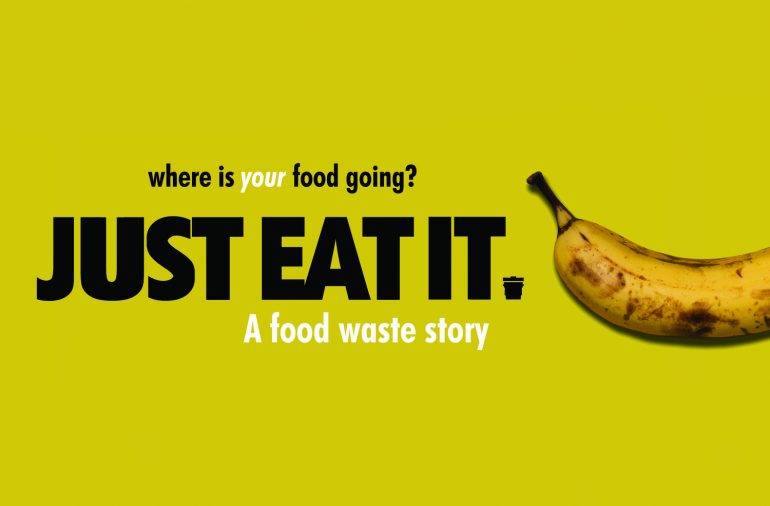Forty percent of food grown or raised in the US—one-third globally—is not eaten. Households account for 15 to 25 percent of that waste. “Wasting food is not only widespread, it’s condoned,” said Jonathan Bloom, a journalist and author interviewed in the film “Just Eat It,” which played at the Clinton Street Theater this October in collaboration with Imperfect Produce.
Released in 2014, “Just Eat It” was filmed and produced by Canadian filmmakers Grant Baldwin and Jen Rustemeyer, and follows their journey of living off of food waste for six months. The film was followed by a panel discussion moderated by Imperfect Produce’s Aaron Choate, and featured PSU’s very own Christa McDermott, the Director of Community Environmental Services; Claire Cummings, a waste specialist with Bon Appetit Management; and Ashley Zanolli, Senior Policy and Program Advisor for Oregon Department of Environmental Quality Materials Management Program.
Supermarket regulations are a major contributing factor to food waste, according to the film. Stores will only accept produce from farmers that fit certain standards of appearance. These standards have become even more strict within recent years. Growers waste “mountains” of food every harvest before it even gets to consumers.
Date labels are described in the film as a further contributor to food waste. There is no federal regulation to put expiration dates on food except for infant formula in the US. Every “best by” date indicated is when the company believes the product will no longer be the best quality; but it doesn’t mean that the food is no longer safe to eat. In fact, the product will probably be safe to eat for weeks after the “best by” date. At one point in the film, Baldwin came across an entire dumpster full of hummus that hadn’t even reached the “best by” date.
The last time people in the US were asked to stop wasting food was during World War II.
Food waste is not only about the final product, i.e. produce, meat, milk, being thrown away and never eaten, but also the resources being wasted to produce all of those products. According to the film, four percent of all energy usage in the US is expended on those wasted food products.
“We are trashing our land to grow food that no one eats,” said Tristram Stuart, author and activist interviewed in the film. Meat and dairy make a larger impact because of all the extra resources needed to raise animals. The amount of water needed to produce a hamburger patty is about the equivalent to a 90 minute shower. The film also brings to light the fact that food waste contributes a considerable amount of methane gas to the atmosphere as it decomposes anaerobically in landfills.
In six months, Baldwin and Rustemeyer had only spent $200 on the food they ate, and “rescued” around $20,000 worth of thrown away food. At one point in the film, Baldwin brought home stacks of chocolate bars that were thrown away because they didn’t have French labels. Near the end of their food waste journey, Baldwin and Rustemeyer invited friends over to “shop” in their cabinets and take whatever food they wanted, because there was so much excess that they couldn’t eat.
There’s a lot of work to be done before food waste can be tackled at a major scale. Cummings and McDermott agreed most of that work can be solved by addressing consumer culture at large. Around the world, different countries, cities, and organizations are addressing the issue of food waste in assorted ways. It is illegal now in France for supermarkets to throw away food. In California, displaying the date label for consumers is voluntary for manufacturers.
In addition to food waste action happening at a national or community level, Cummings gave five strategies for the individual to pay attention to everyday in order to address food waste in one’s own household, which include tracking what you already have in your kitchen and planning meals around those items. “Have meals in mind when you go shopping and store what you have, store it smart,” Cummings explained, “that way you are less likely to grab something quick and easy and end up letting produce in your fridge go bad. Storing your food properly to ensure it stays fresh for the longest amount of time is important.” Finally, Cummings suggested keeping a section of your fridge dedicated to food that will go bad soon, so you know to reach for it first and eat it.
This article originally appeared in the print edition of our November 2017, issue.





